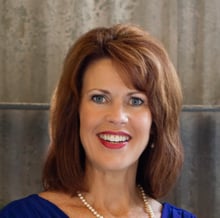I entered into the long-term and post-acute care (LTPAC) field with the desire to improve my fellow human beings’ quality of life, and one thing I can say with  assuredness is that this reason holds true for most of us. One of the many challenges we face in this era of health care is accomplishing this task while meeting the myriad requirements necessary to be paid for our services.
assuredness is that this reason holds true for most of us. One of the many challenges we face in this era of health care is accomplishing this task while meeting the myriad requirements necessary to be paid for our services.
So what is the good news? Technology. Yes, that’s right, technology. Now I can hear a group of you moaning, or even possibly cursing me for using that dirty word. And for others it is what you’ve grown up with. But let’s face it—we are working in an amazing time of advancements and we have to put those advancements to good use for us and for our patients.
The appropriate use of technology is the only way to maximize our patients’ outcomes and our professional success. A critical factor in doing this is learning to use the newest tools and systems of our trade. These tools include, but are not limited to, mobile equipment, electronic health records, data analytics, remote monitoring, and the ever-growing arena of telehealth.
So how do busy patient care providers get the training they need to be more efficient and effective with these tools while still maintaining their high quality of care? Those holding the technology tools—the software and hardware companies in our industry—must provide our professionals blended learning opportunities to make the learning experience easily accessible, role-based, and work-schedule friendly.
We are in an age of immediate access via the internet, and our industry’s healthcare professionals need that same approach to training. In my opinion, training should follow what I refer to as DEAP:
- Divided into manageable chunks: How big is manageable? Think of it as a training break. Develop content that doesn’t take more than 15 minutes to complete.
- Easily accessible: Training for products and processes should be safely stored where they can be accessed via a secure internet connection. This allows for quick and easy access options that include smart phones, mobile tablets, laptops, and desktop computers. It also eliminates the need to find a manual or require access on a specific computer.
- Available anytime: Whenever possible, training should be stored so that staff can use secure logins to participate in training whenever the need arises.
- Process- and role-based training: A content library that is specific to each work role will save significant amounts of time for the professional using a software system, platform, and/or tools. This type of training collection keeps staff members from wasting precious time sifting through training that includes all functionalities available for each work role, rather than the specific process they need to complete.
For example: A patient leaves for the hospital at 11:30 pm with apparent stroke symptoms. This patient will need to be signed out from the facility. However, the nurse responsible for this task has not signed anyone out of the facility yet. Is a short process training video available for them to view when and where they need it? If there is only product-based or training documentation or videos that illustrate what each section/module of the EHR does then the nurse will have to review multiple items to ensure she has completed all tasks required, which may include such as clinical, billing, electronic medication administration record, or electronic treatment administration record. A short training video (10 minutes in length) that illustrates the transfer-to-hospital process will quickly show the exact steps needed to appropriately sign out the patient in a timely manner.
Yes, our industry is moving at a fast and ever-growing pace. And with it comes an increasing dependency on technology to meet patient care and business goals for success. We must be proactive in harnessing technology to our advantage and provide our professionals the training they need, when and how they need it so they can continue to offer high-quality care when and where they need to.
Making staff training content easily accessible and consumable is an important step in this direction.

Edie Deane, MS-CCC, CCM, develops customer- and staff-friendly processes of communication and role-specific training for Quantum Age Collaborative. Edie has worked for more than 30 years in LTPAC in sub-acute/brain injury rehabilitation; facility-based clinical and departmental management; as a national management trainer in the areas of financial management, departmental management, customer service and marketing; in the EHR software sector developing strategic customer and staff product training and communication; and as an owner of an online continuing education company, Care2Learn, for the allied health professionals working in the LTPAC industry.